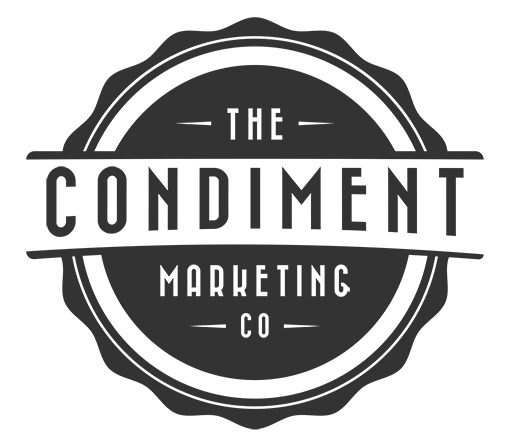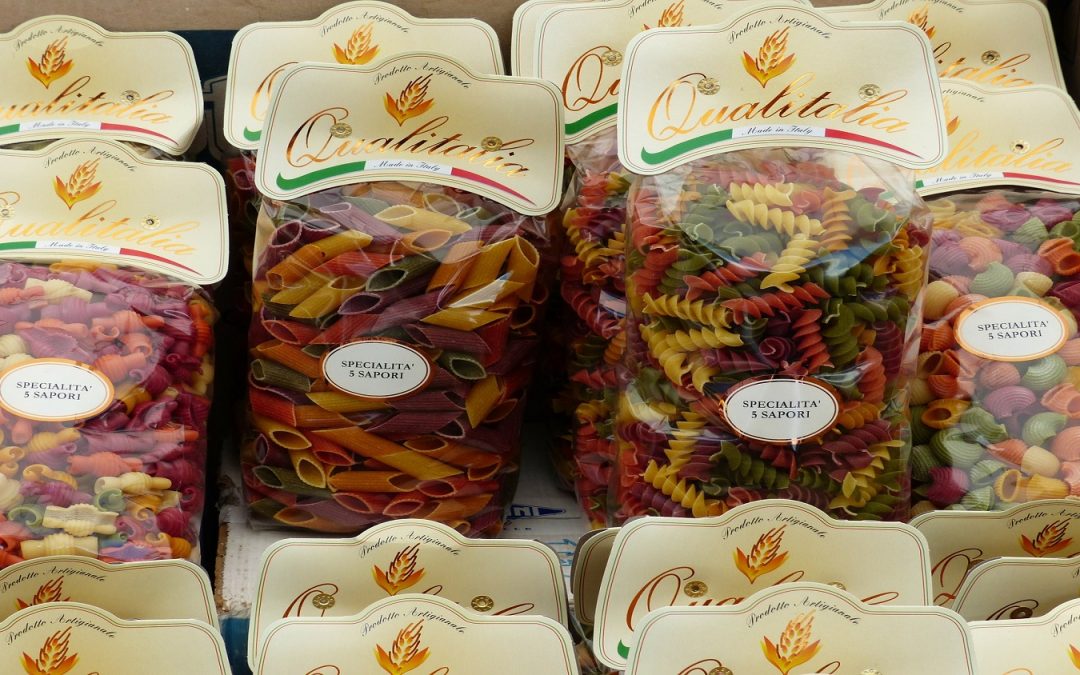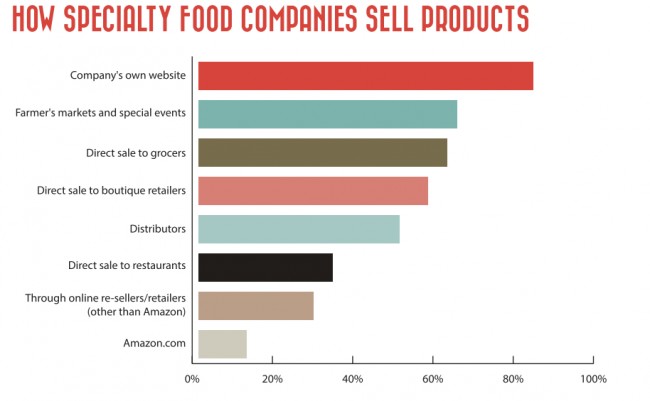In 2013, The Condiment Marketing Co. conducted a survey to reveal how packaged food companies sell their products both online and offline (get access to the full survey report here). What follows is a snippet of some of those results and an examination of a few of the ways food companies choose to sell.
Selling Through Own Website
Of those surveyed, 87% said they sell their product through their own website.
Cons: You do fulfillment (as if you don’t have enough to do already), and you have to find a way to make money on the product considering shipping costs. You either charge the customer for shipping or swallow the cost in the hopes that you can earn a loyal customer.
Pros: You are in control. You can market directly to your fans without paying a retailer or distributor a percentage of your earnings.
Selling at Farmers Markets and Special Events
68% sell product at farmers markets and special events.
Cons: There is a lot of legwork required to sell at an event. Getting set up as a vendor can be pricey because fees and the equipment required (tables, tents, transportation, staff, sample product, etc.).
Pros: You get to interact directly with your customers, which means useful feedback and relationship building. Now’s the time to start building your email list and social media following!
Selling Through Boutique Retailers
56% sell through independent, specialty retailers. We call them boutique retailers.
Cons: When you sell through a number of independent retailers you’ll need to follow up with each individually — a time suck! Tasting and promotional events are often required, which can be time-consuming, too.
Pros: When you work with retailers of any size, there is the promise of selling more product faster. Ultimately, that means less work for you per jar sold. If the retailer has a great reputation, you gain credibility from aligning with their store brand.
Additional Reading: Make Your Startup Food Biz Look Big With These Special Tips
Selling Through Distributors
51% sell their product through distributors.
Cons: You give a distributor a piece of the margin. You need to trust the distributor to represent your brand correctly.
Pros: While you do have to pay a distributor, you could argue that the saved time allows you to focus your energy on other, more profitable tasks. With a distributor working on your behalf, you don’t have to drive around town dropping off product. While the distributor isn’t likely to do much in the way of direct sales, you could get some exposure by being in their catalog.
Selling to Restaurants
35% sell their product through direct restaurant sales.
Cons: Restaurants don’t usually have much storage. You may need to make deliveries often. Restaurant owners/managers are busy and have a lot of bills to pay, so you’ll likely chase payments.
Pros: It is possible to sell high volumes of product. Restaurant contracts can result in repeat business. Many restaurants feature small and local products on their menus and in their marketing, which translates into additional marketing for you.
A Look at All Responses to The Question, “How Do Specialty Food Companies Sell Products?”
What do you think? How do you prefer to sell your food product?







very very helpful thanks alot
Hi Sara,
Do you have any data of companies getting acquired by just selling their product to restaurants, not grocery retail?
No, I don’t have any data. Only have heard anecdotally that working with restaurants/food service can be a worthwhile channel.
There really are a lot of factors to consider when deciding how best to sell your food product. I particularly like that the article brings up selling through distributors. After all, it is a great way to have someone else manage most of the selling, so that you can focus on actually making the product.
We are a 501c3 charity and we dont sell but give a gift for a donation; We have been not allowed at local farmers markets and so we went across the street and now the city is banning us from displaying our produce and products. Can some one help us. Thanks